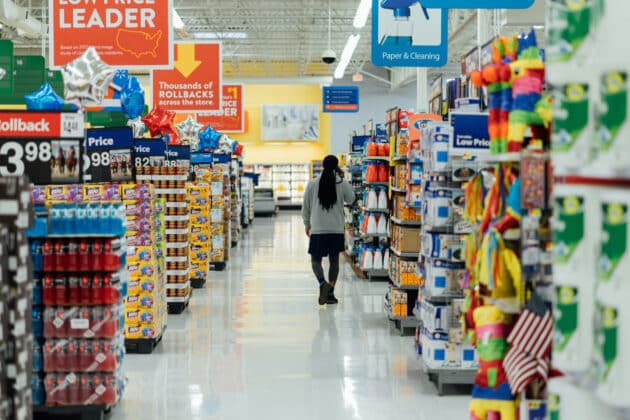It’s the busiest time of year for many marketers—holiday planning. And if you haven’t laid out your 2019 holiday marketing strategy, it’s time to get started. We recently surveyed marketers in the US, the UK, and France and found out that 28% start planning their holiday campaigns in Q2, and 26% start in Q3.
On top of that, about half of them plan to spend more this year on their holiday marketing. So that means marketers with the same budget as last year will have to be more efficient with their spend to beat their competitors. And for those with bigger budgets, they’ll be expected to totally outdo last year’s performance.
We went straight to our shopper data to help share the top holiday planning tips for your holiday marketing campaign. At Criteo, we can see where consumers browse and buy across our 19,000 ecommerce partners worldwide, including purchases in store, online, on mobile, and in apps. When we looked back at holiday 2018, we picked out some valuable insights: how consumers shopped, the biggest sales spikes of the season, and what channels drove the most holiday sales.
Here, we’re sharing seven tips to improve your holiday marketing campaign, no matter how much—or how little—you’ve planned. (Want more? Watch our holiday webinar on demand for even more tips and trends.)
1. Start spending before holiday shoppers start buying
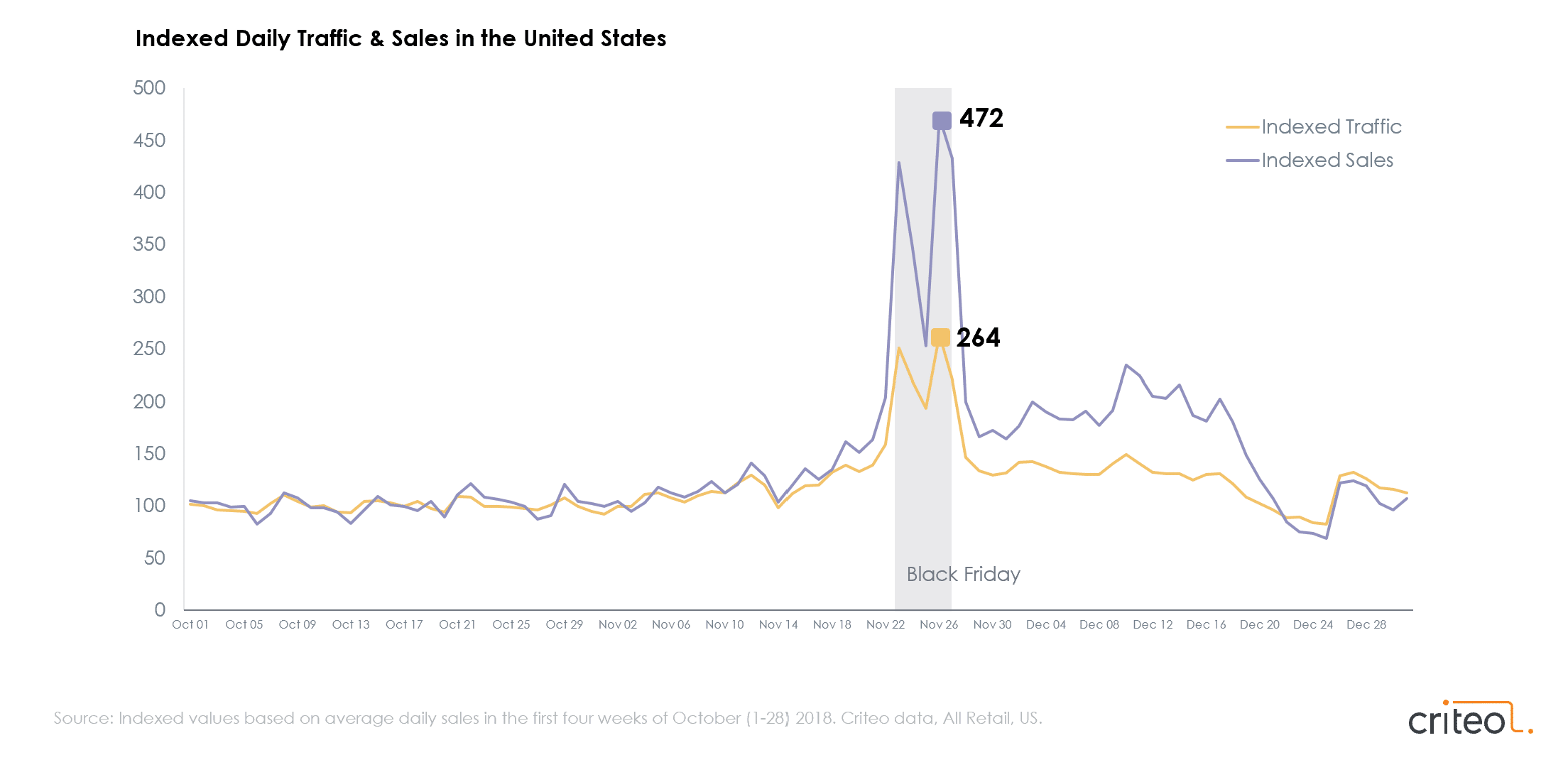
Consumers don’t wait until Black Friday to shop online and make their purchases. “We know that many marketers have already caught on to this, but our data shows just how early traffic and sales start to climb … as shoppers make their purchase decisions well ahead of the holiday rush,” explained Florent Maillard, senior manager of insights and analytics at Criteo, in our holiday webinar.
In Q4, traffic and sales steadily increase from October 1st through mid-November. After that, traffic and sales reach their peak on Black Friday and Cyber Monday and stay higher than normal through Christmas Eve. The chart above shows traffic and sales for the US, but we see the same trend in other countries, like Germany, France, Spain, and the UK.
Marketers have started ramping up their holiday spend in October to influence shoppers at every stage of the customer journey. The earlier you make holiday shoppers aware of you and drive them to your site or app to consider your products, the bigger chance you have of getting them to buy from you.
This year, start your awareness campaign in late September, and tack on consideration and conversion campaigns by mid-October.
2. Go global for Black Friday
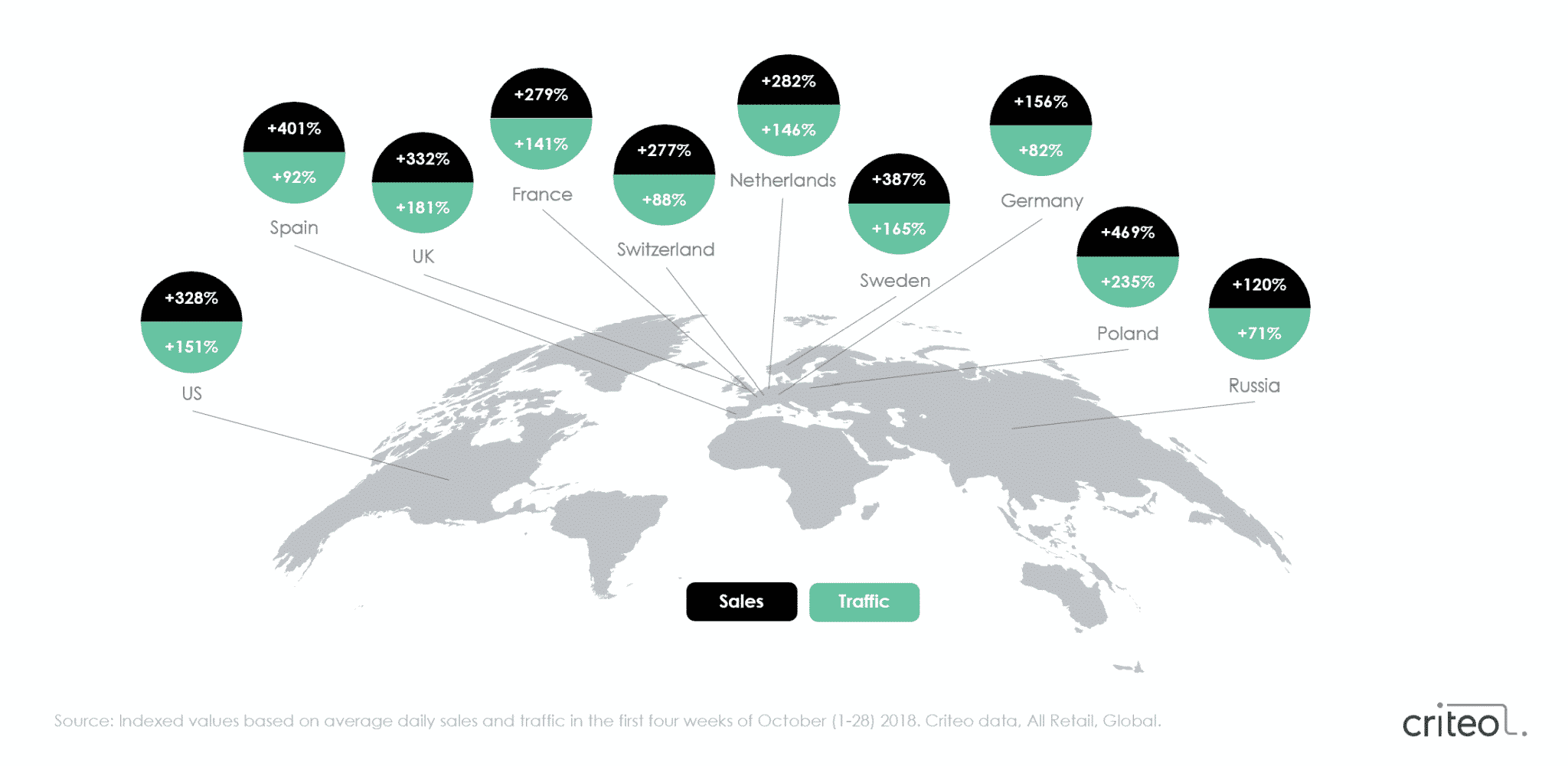
Black Friday might have originated in the US, but now it’s officially a global shopping day. We see sales and traffic spikes in other countries comparable to those we see in the US. And in countries like Spain and Poland, the sales gains are even larger.
Cyber Monday is gaining popularity outside of the US, too, and we see impressive sales spikes across Europe that day.
Make sure your consideration and conversion campaigns reach a global audience around these key shopping days. There are big opportunities to increase your traffic and sales if you look beyond the US.
3. Keep improving your mobile shopping experience
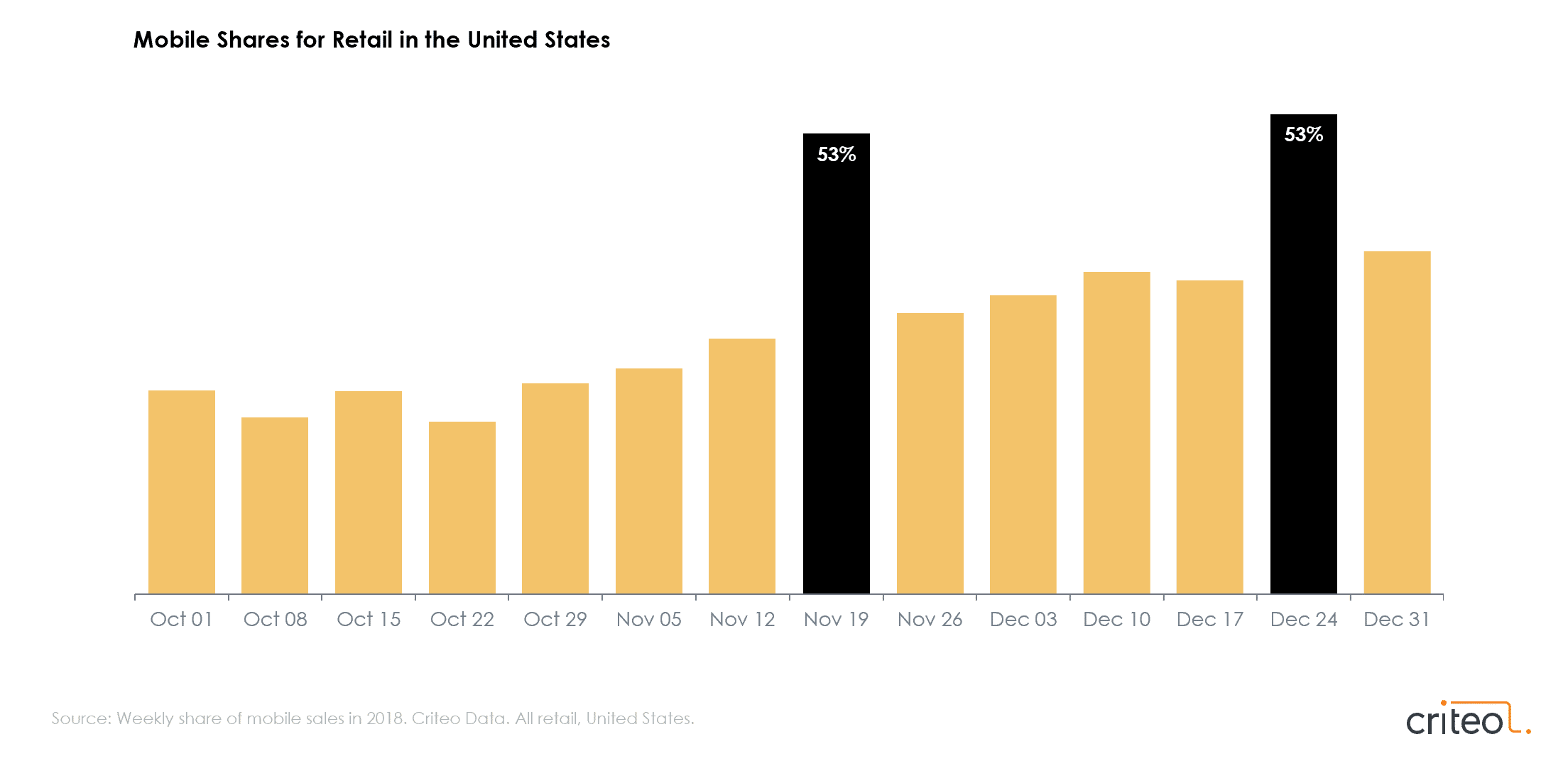
Our global data shows that holiday buyers love mobile. In the US, mobile’s share of sales peak at 53% in the week of Black Friday, and again the week of Christmas Eve. We saw the same end-of-year mobile sales spike in other markets, which means consumers are still shopping on the go during holiday travel.
If you want to convert every mobile shopper, the experience has to be perfect. You need short page-load times, great product photos and descriptions, and easy checkout. Explore your competitors’ mobile sites to see how you can improve.
4. Get consumers to your app on Black Friday
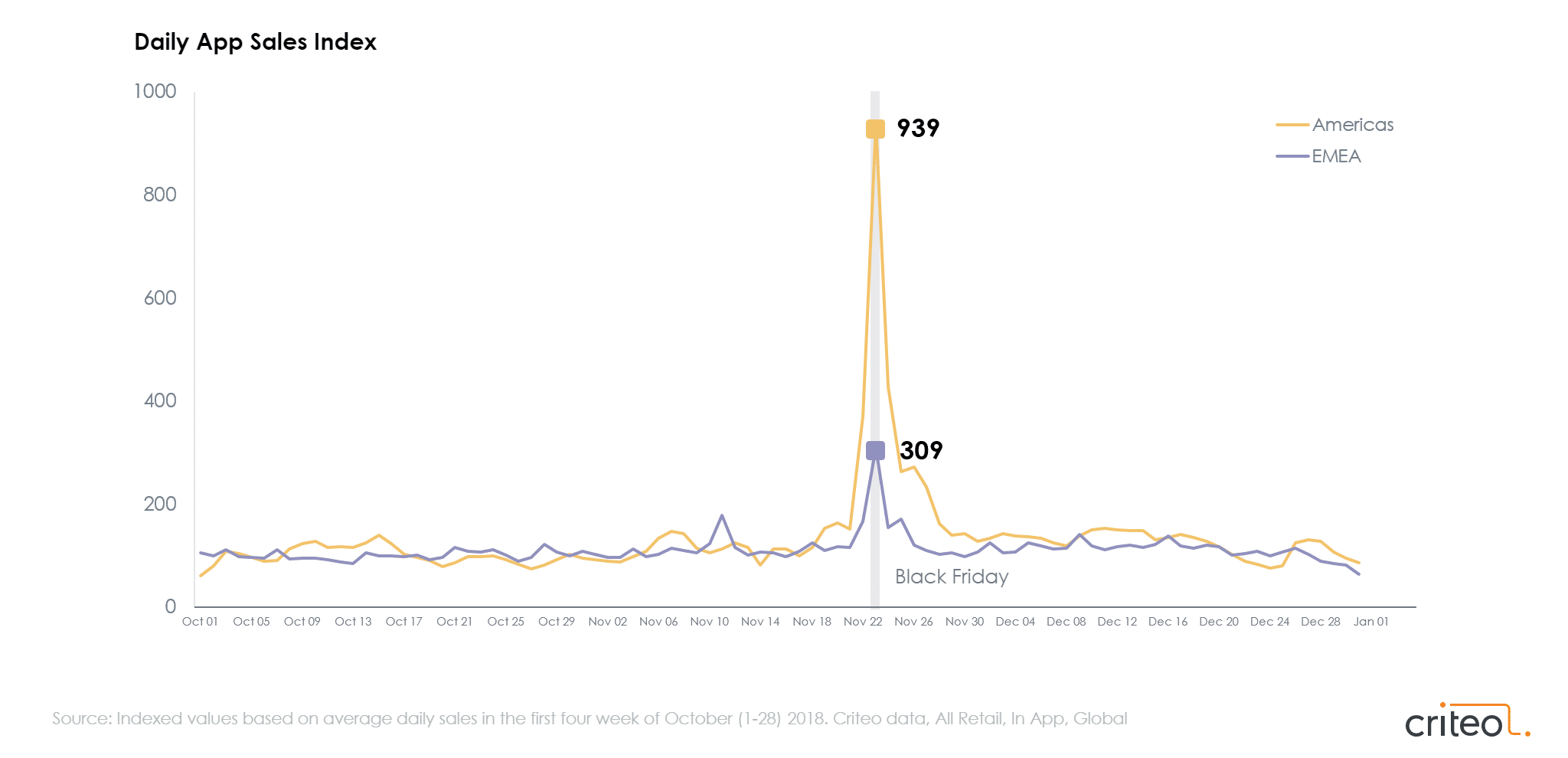
If shoppers love mobile, they really love apps. “Last year, in-app transactions increased even more than the average [sales growth on Black Friday],” Criteo’s Maillard pointed out in our webinar. “Apps are actually stealing share from overall retail sales around the holidays.”
If you have a shopping app, get consumers there on Black Friday. Your app is the easiest place for consumers to convert—users can shop 24/7 in an immersive environment and complete a transaction in just a few clicks.
In September and October, launch campaigns that get consumers to download and engage with your app. As you get closer to Black Friday, start running app retargeting campaigns that bring users back to your app to buy.
5. Help consumers transition seamlessly from desktop to mobile
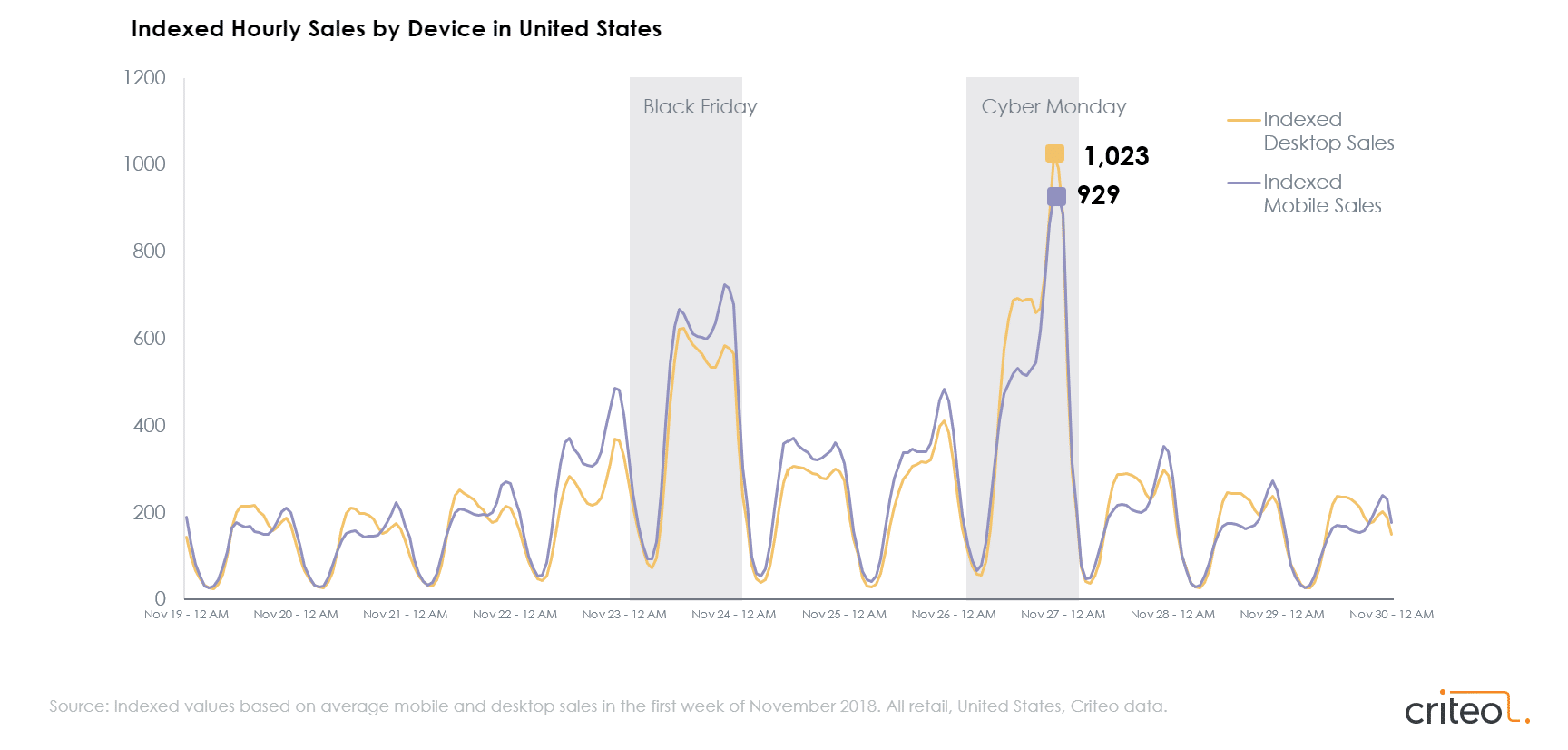
We already knew that consumers shop on desktop and mobile, but our hourly sales data shows that shoppers go to either device to buy—it depends on the time of day, the day of the week, and the shopping holiday.
On most days, desktop sales are higher than mobile sales in the afternoon, and mobile sales are higher in the evening and reach their peak at around 10pm.
On the weekends, mobile sales are higher than desktop at all hours. Black Friday is similar, with mobile sales increasing more than desktop throughout the day and even more in the evening. Whereas on Cyber Monday—typically a workday for consumers—desktop sales are higher all day.
You never know when a shopper will decide it’s time to buy, so desktop and mobile have to work together to get the sale. The simplest way is to make sure your cart is consistent across devices; there’s nothing more frustrating for your customer than when they put items in their cart on desktop, but those items aren’t there on your mobile site or app.
You should also use behavioral and transaction data from every shopping session—whether it’s on desktop, mobile web, or mobile app—to personalize the holiday shopping experience for every customer on every device they use.
6. Combine online and in-store data to optimize digital campaigns
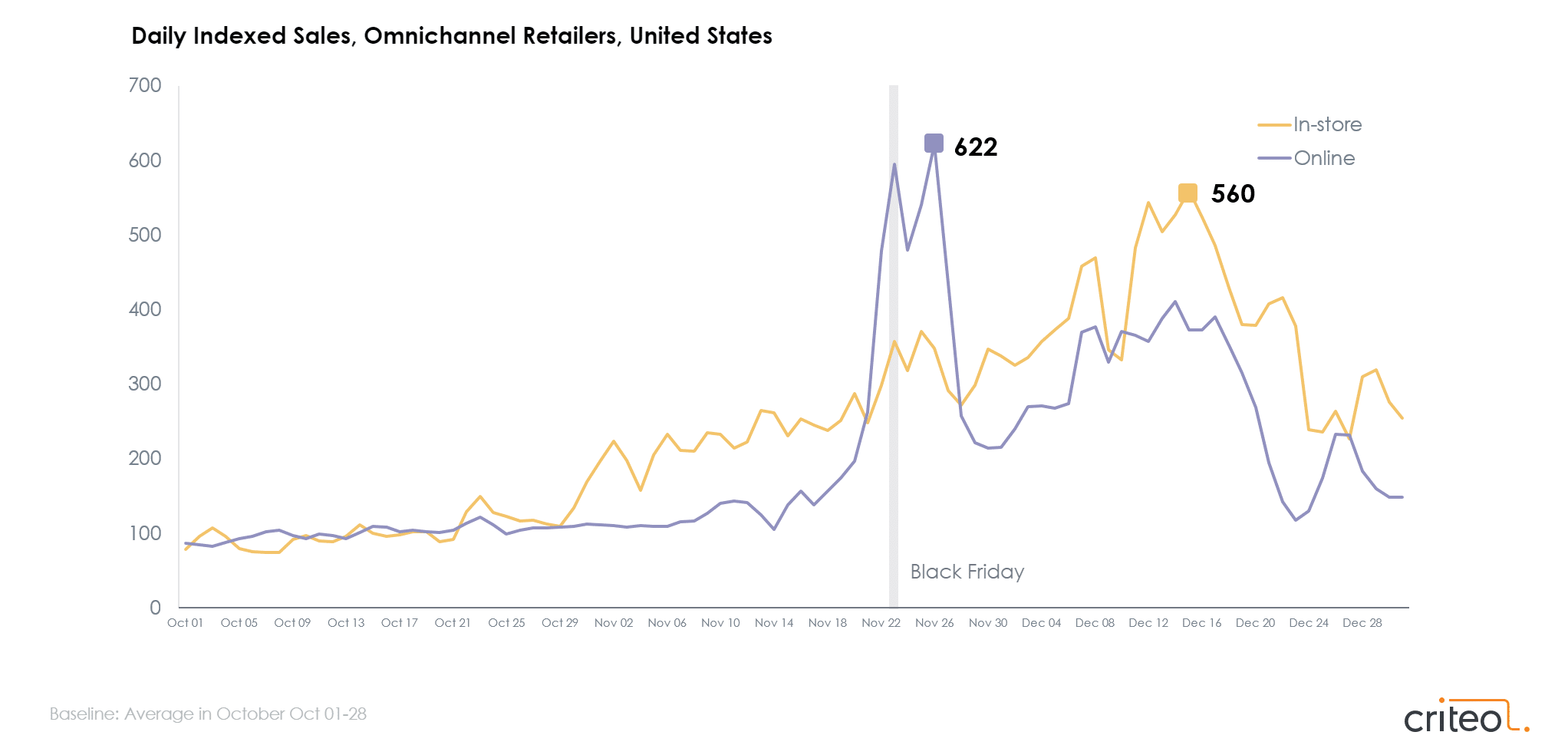
For our omnichannel partners—those with digital and physical storefronts—we looked at how in-store sales compare to online sales for holiday 2018.
Our US data shows that there are four key phases for holiday shopping:
- In October, online and in-store are about even.
- A few weeks prior to Black Friday, in-store sales pick up.
- For Black Friday and Cyber Monday, online sales increase significantly more than in-store sales.
- In December, in-store sales are higher, especially right before Christmas. Even in the era of two-day shipping, consumers prefer to shop in-store rather than take their chances on getting their online order on time for Christmas Day.
In-store vs. online is like desktop vs. mobile: Consumers buy on both channels and each one has valuable shopper data.
Marketers should combine in-store sales data with all of their digital shopper data to deliver more relevant ads and drive more sales wherever their customers prefer to shop.
7. Monitor your product category
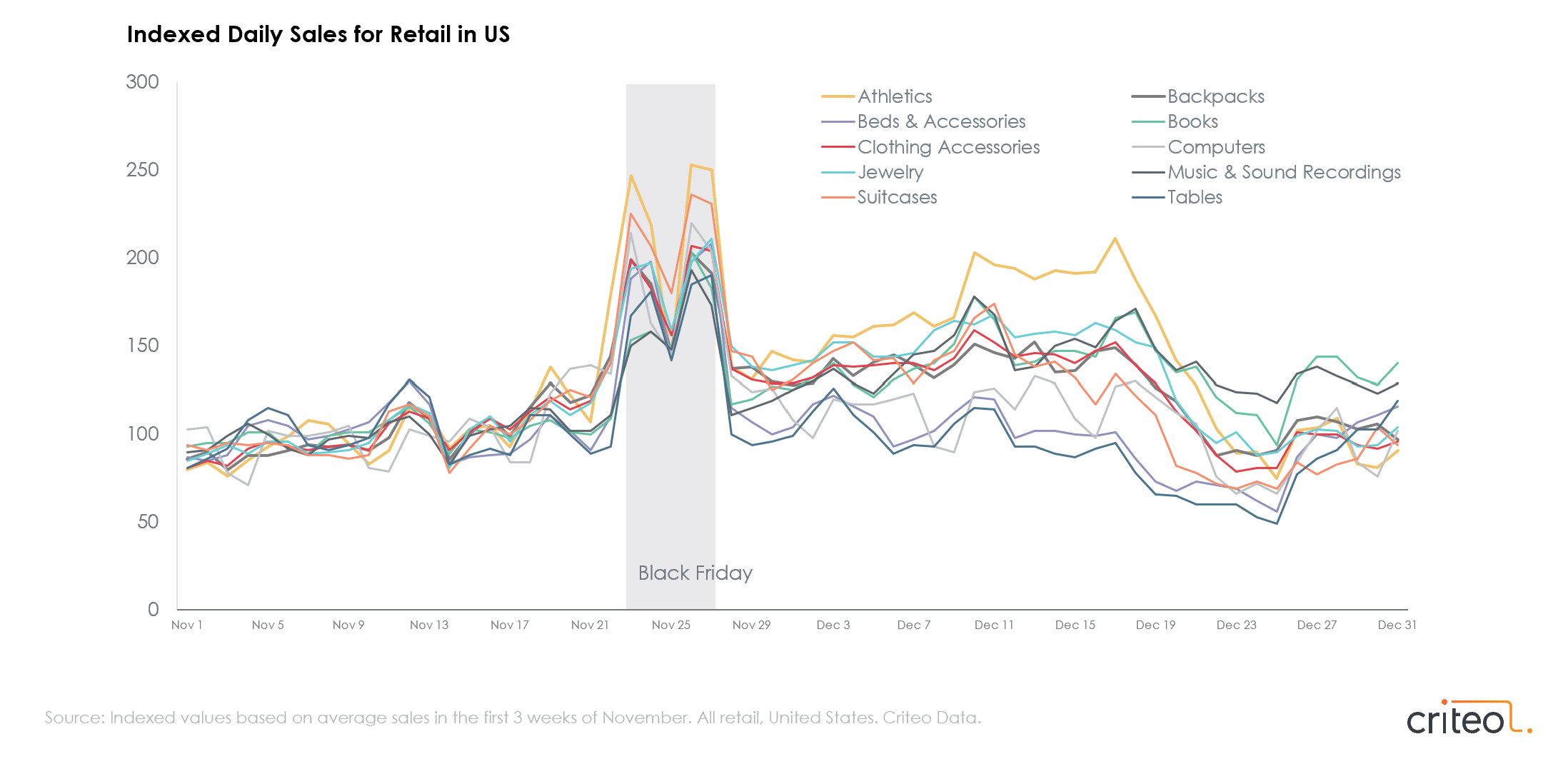
It’s important to know the shopper activity for your category because there are huge holiday sales opportunities for some products before, during, and after Black Friday.
The chart above shows the big sales spikes for products like athletic gear, suitcases, and jewelry in the US.
If you’re a retailer that sells these products, consider starting your holiday campaign even earlier to increase brand awareness. Then run more targeted consideration campaigns to influence shoppers as they research these big-ticket items before Black Friday. And of course, a conversion campaign with a discount works great on Black Friday to get the sale.
The sales spikes for your category might be different. Some even spike after Christmas Day. When you’re in the know, you can adjust your holiday campaigns and get ahead of the competitors in your category.
Watch our webinar on demand to get all 10 of our planning tips:
















